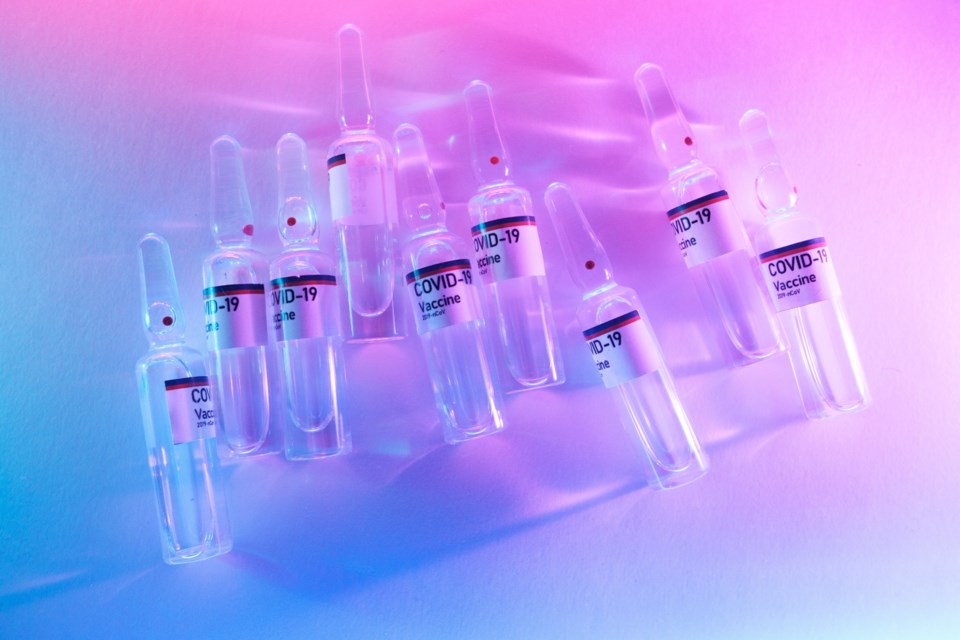Ontario's Vaccine Distribution Plan should see the highest risk individuals getting their vaccines by the end of this month and then the highest numbers of actual vaccines happening next month.
In April, as Phase Two of the rollout plan comes into play, the province is expecting to see huge increases in the number of residents able to get vaccinations.
The details were outlined in a Ministry of Health technical briefing held in Queen's Park today with several high-level ministry officials and physicians. The rules of the briefing are that the ministry officials cannot be directly quoted.
As the briefing began, one official revealed that more vaccines are on their way into Canada.
"We just heard there is likely an additional number of Pfizer vaccines coming to Canada — and therefore to Ontario as well — in March more than we were aware of, and also as you probably know today, Janssen (manufacturer of the single-dose Johnston & Johnston vaccine) was also approved by Health Canada, again giving us additional vaccines." said the official.
Prime Minister Justin Trudeau confirmed this morning that Pfizer has moved up its delivery schedule to Canada, meaning 3.5 million doses originally set to arrive in the summer will be arriving over the spring.
This means by the end of March, Canada will have eight million doses available of several vaccine types. Canada will also receive one million doses of the Pfizer vaccine in April and another one million doses in May.
He said even as Ontario is planning to advance its vaccine schedule, the news of additional vaccines may speed things up even more, so that more Ontario residents get vaccines more quickly that originally anticipated.
The briefing was told that Ontario's Phase 1 should be wrapped up by the end of March, having provided vaccines for seniors in congregate homes, for health-care workers, for adult Indigenous, Métis and Inuit populations, for adult chronic home care patients and for adults 80 years and older.
Phase 2, which is April through to July, will see millions more doses made available to adults aged 60 to 79, to people living in high-risk congregate settings (shelters, community living), to people with high-risk chronic conditions and their caregivers, to other at-risk populations and to people who cannot work from home.
The individuals in this category can expect their vaccinations to happen in early June, the ministry officials said.
Much discussion was held about defining workers who cannot work from home and what priority would be given for vaccines for those workers. The health ministry officials said there were two groups in that category, but the vaccines would be distributed "in parallel" they said.
The first group of remote workers, roughly 730,000 people, would include:
Elementary and Secondary school teachers and staff;
- Critical event workers, firefighters, paramedics, police, compliance officers, special constables, funeral workers;
- Childcare, foster care workers;
- Food manufacturing workers, and;
- Agriculture and farm workers.
The second group of remote workers, roughly 1.4 million, would include:
- High risk and critical retail workers, grocery and pharmacy;
- Remaining manufacturing labourers;
- Social workers, youth justice;
- Courts, justice system, probation and parole;
- Low risk retail workers, wholesale and general goods;
- Transportation, warehousing and distribution workers;
- Energy, telecom (data, voice), water and wastewater workers;
- Financial services;
- Waste management, and;
- Mining, oil and gas workers.
The officials also defined the categories of those people regarded as "at risk", who will be part of the Phase 2 rollout. The highest-risk workers, roughly 442,000 people, includes the following:
- Organ transplant recipients;
- Hematopoietic stem cell transplant recipients;
- Neurological disease patients with compromised respiratory function;
- Haematological malignancy diagnosed patients, and;
- Kidney disease patients with eGFR less than 30.
Next will be "high risk" individuals, roughly 292,000 persons, which includes:
- Obesity with BMI higher than 40;
- Other immunosuppressive treatments such as chemotherapy, and;
- Intellectual or developmental disabilities such as Down Syndrome.
Also included are 2.2 million individuals described as "at risk" which includes:
- Immune deficiencies / autoimmune disorders;
- Dementia;
- Diabetes;
- Liver disease;
- All other cancers;
- Respiratory diseases;
- Spleen problems;
- Heart disease;
- Hypertension with organ damage;
- Diagnosed mental disorder;
- Substance abuse disorder;
- Thalassemia;
- Pregnancy;
- Immunocompromising health conditions, and;
- Other disabilities requiring direct support care.
The briefing also revealed that an online booking service with a call centre is expected to be operational by March 15. Pilot projects of the call centre and the online service are already being tested in some parts of the province, the briefing was told.
Vaccines are also expected to be delivered soon to pharmacies in different parts of Ontario. It was mentioned that a pilot project was being tested in mid-March for Toronto, Windsor and Kingston areas.
No mention was made of Northern Ontario. It was mentioned in most cases, the pharmacies would be distributing the relatively new AstraZeneca vaccines.
Len Gillis is a Local Journalism Initiative reporter at Sudbury.com. He covers health care in Northeastern Ontario.



